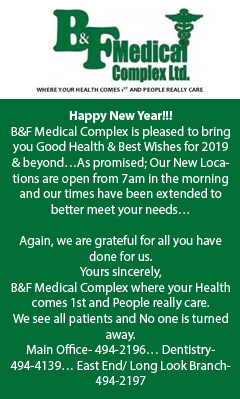Economies ‘built on sand’- Part A
Countries that depend upon a single product and a single market for their economic existence put all their eggs into a single basket. When that basket takes a hit “all hell breaks loose.”
Economies uniquely vulnerable to sudden shock have a number of common features. Economies that are the first to go into downturn after a natural or manmade crisis are overwhelmingly dependent on a single product and single market for existence.
This dependence on a single product or service for national revenue becomes monolithic. It is crystallised. A mold is set that is difficult to remold.
The single source of revenue becomes a “golden goose.” When the goose stops laying its golden eggs there is terrible trouble.
The greatest examples of mono economic cultures are oil producing nations. Offshore financial services share a similar dynamic with a single caveat: financial services are more prone to shock, as offshore financial services comprise entities that can easily move to an alternative jurisdiction.
This fragile nature of financial services is made worse if the jurisdiction is unable to fend for itself, and provide the bare essentials for survival within its boundaries.
Monocultures possess populations that camp around one single economic polarity. Then a “single hit” pulls a single product economy to its knees. The result is recession and economic downturn.
Conversely, diversified, resilient economies, that possess varied and numerous revenue streams, with a degree of self sufficiency, are capable of withstanding physical and economic trauma: sudden shocks to the economic system.
Resilient and diversified economies swiftly bounce back to normal after disaster strikes. The reason: there exists a diversified economic base that supports quick economic restoration.
After disaster, single product cultures recover much more slowly, especially when the “golden goose” has been crippled. There is no strong economic foundation to support strong and robust economic recovery. Recovery depends on importation and charity.
The huge increase in imports post a disaster creates a backlog at the ports. There is a sudden and massive increase in the need for the imports of everything, from construction materials to basic food stuff. There is a slowdown at the ports, prices rise; there are balance of payments issues and growing deficits and national debt.
One product economies become all consuming monocultures. Alternative generators of national revenue and GDP are nonexistent. Investment decisions are made to further “prop up” the single economic generator.
Alternative sources of national income- using the Virgin Islands Model- such as agricultural production, maritime commerce, fishing, local craft making, food production, and ecotourism, are underinvested in, or completely ignored.
All local businesses are pulled into the vortex of the single product, and become overly dependent on the one product. The one product becomes the “center of gravity.”
Poor decision making by policy makers and economic mismanagement are a common denominator of economies that are monoculture and that lack diversity. This is the result of a “comfort zone” that deceives the population into thinking that the “gravy train” will always be in existence.
To be continued…
Connect with Dickson Igwe on Facebook and Twitter








.png)













.png)



3 Responses to “Economies ‘built on sand’- Part A”
However, the BVI lacks the natural resources to create either a primary or secondary economy; its economy is service based (tertiary). Though other sectors singularly may lacked the strength to become a third or prime economic pillar, collectively other sectors can become a third or fourth pillar, ie, agriculture, fishing, back office operations, light manufacturing, trade.........etc. Nonetheless, in conjunction with developing other pillars, tourism and financial services need to be deepen and strengthen.